The Next Crypto Bull Run: Insights and Forecasting

In the world of crypto markets, everyone wants to stay ahead of the curve, to outsmart others and predict the next move of the orange coin. Here at Morpher, we pride ourselves on delivering honest articles, and in this case, the most honest answer is simple: nobody knows. Still, investors and readers are constantly on the lookout for a magical formula that guarantees investment success. If only it were that easy! While we won't indulge in such wishful thinking, we do want to prepare you for the next bull run.
Now, don't expect us to dish out price predictions or pretend to know when the next bull run will strike. That's not our style. Instead, our aim is to equip you with valuable insights, diverse opinions, and informative charts, empowering you to form your own opinion. After all, the spirit of Bitcoin is all about taking control of your own destiny, and that extends to your investment decisions as well.
In this comprehensive and up-to-date review, we'll explore historical analogies, present the current landscape, and discuss various future outlooks. So get ready to dive into a journey that combines an in-depth historical analysis with a forward-thinking perspective. Let's get started on this exciting exploration together:
- Recap of Previous Crypto Bull Markets
- Current State of the Crypto Market
- What Could Drive the Next Crypto Bull Market
- Strategies for Maximizing Opportunities in the Next Bull Run
Good to Know Before We Start
Furthermore, before delving into our analysis, let's establish three key prerequisites that we will take for granted throughout this article.
- The Crypto Market works in Cycles with Bull and Bear Markets
It's essential to understand that the crypto market operates in cycles characterized by alternating periods of bullish and bearish trends. The volatility within this realm is unlike anything found in traditional financial markets. Prices can soar to astronomical heights and plummet just as rapidly. Such volatility presents both opportunities and risks for investors, requiring careful consideration and a calculated approach.
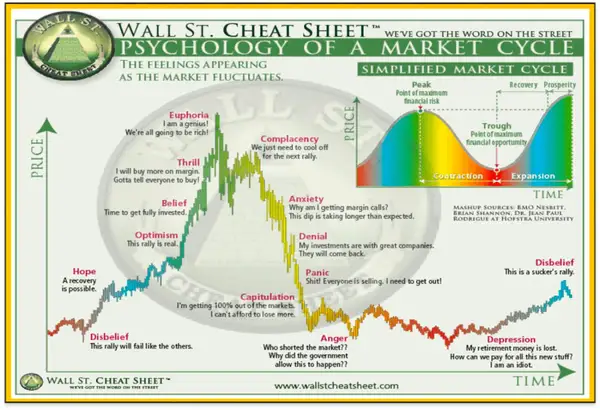
- Bitcoin is still the main driver of the cryptocurrency market; most other coins correlate with Bitcoin
It's undeniable that Bitcoin remains the driving force behind the cryptocurrency market. While the industry boasts an array of diverse coins with unique use cases, the overall correlation is high. This phenomenon can be attributed to the relative size and maturity of different sectors within the market. As most sectors are still in their nascent stages, reliable data on correlation is scarce. As a result, portfolio allocation within the cryptocurrency industry poses challenges for investors.
However, we have developed a correlation matrix to shed light on the interdependencies among sectors, allowing us to monitor how this correlation evolves over time. Until then, prudent investors must conduct thorough due diligence on individual cryptocurrencies to position themselves for profits during periods of reduced correlation. You can see that Ethereum (ETH) is 87% correlated, and most other sectors, like DeFI (DPI) or Metaverse (MVI), are 75% correlated. The US Dollar (USDT) and Gold (PAXG) are not really correlated with Bitcoin, though.
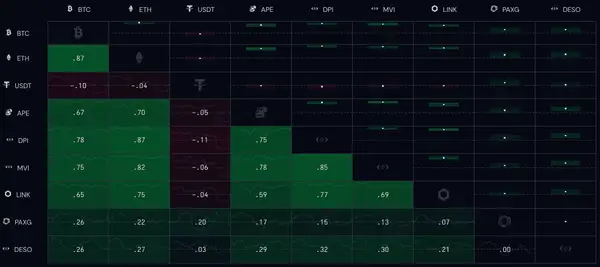
- Most Altcoins lose their value in the long run
It is crucial to acknowledge that the majority of altcoins face significant risks and may ultimately fail. In a compelling analysis by Willy Woo, it becomes evident that there are two types of altcoins: those that steadily lose value aka. “Degens” and a few “Oscillators” that manage to keep up with the gains of BTCUSD. Therefore, it is imperative to exercise caution and understand that most altcoins do not represent sound long-term investment decisions.
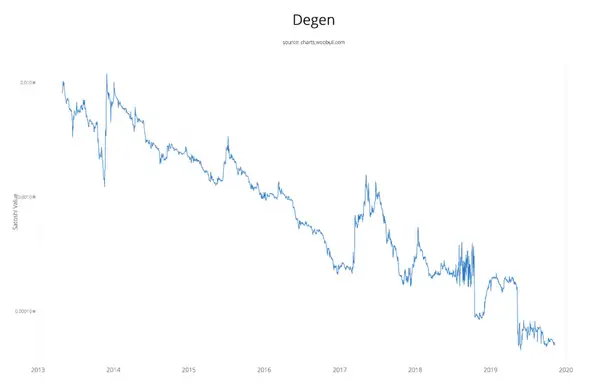
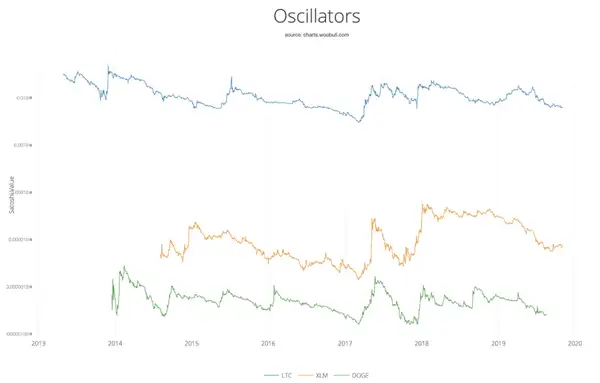
Recap of Previous Crypto Bull Runs
In the vast and ever-changing world of cryptocurrencies, it's crucial not to get swept away by the daily storm of news and opinions. The landscape is teeming with thousands of conflicting views, ranging from proclamations of Bitcoin's demise to grandiose claims of it reaching $1,000,000. Your role as an investor is not to react impulsively to every tweet or narrative but to sift through the underlying information, critically analyze it, and make informed decisions accordingly. Moreover, it is essential to remember that historical performance is not a foolproof indicator of future outcomes. Always evaluate the current status quo of the market and re-evaluate the variables at play.
Long-Term Cycles
While history doesn't repeat itself exactly, it often rhymes. Examining the cryptocurrency market's behavior throughout its past can provide valuable insights. Becoming a student of financial market history can significantly aid in assessing probabilities in various scenarios. Let's delve into that and closely examine the previous crypto bull runs within the cryptocurrency market. The chart below depicts the Bitcoin price in Heikin Ashi candles, showcasing the bull and bear markets over the past five years. It's important to note the pronounced and short-lived price movements evident in these charts, contributing to the market's reputation for high volatility—a wild west that has created fortunes and wreaked havoc for many.
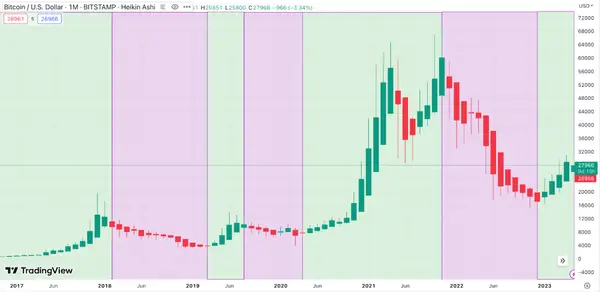
As the chart illustrates, even recent bull markets have witnessed Bitcoin prices surge by a factor of 13x while also experiencing significant drawdowns like the recent one of -77%.
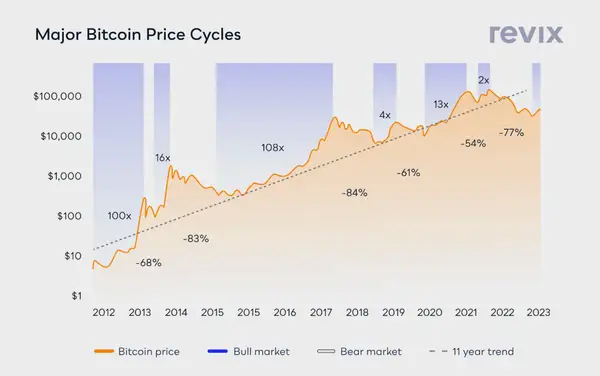
Short-Term Cycles
While the preceding discussion focuses on long-term cycles lasting over 100+ days, it's also crucial to understand how the market behaves within a bull market phase.
Frankly speaking, it can be quite counterintuitive. The market remains highly volatile, with intermittent significant sell-offs lasting merely a few days to a couple of weeks. However, it also showcases substantial price increases, often surpassing the 100%+ range. Therefore, even during an evident bull market spanning hundreds of days, the market can seem incredibly volatile and unpredictable. Consequently, predicting the start and end of a bull market becomes an arduous task.
Understanding the dynamics of both long-term and short-term cycles is vital for navigating the cryptocurrency market effectively. By keeping these factors in mind, you'll be better equipped to analyze and respond to market trends.
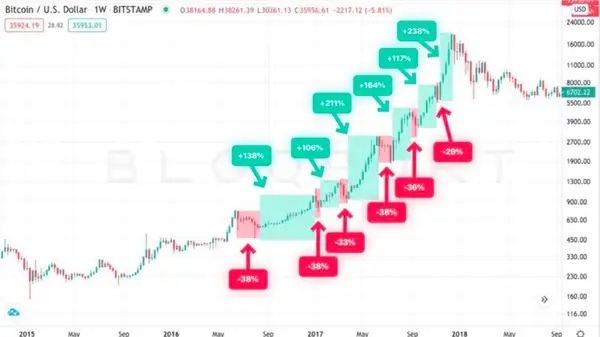
Drivers of Cycles
While we cannot pinpoint the exact factors or events that contribute the most to the adoption of cryptocurrencies, it is evident that Bitcoin's price is primarily determined by the interplay between its supply and demand. Some argue that Bitcoin's intrinsic value lies in its unique combination of scarcity, cryptographic properties, and philosophical ideals.
- Institutional Adoption
The adoption of Bitcoin by institutions stands out as one of the most significant developments in the cryptocurrency market of late. Notable companies like Tesla, Square, and PayPal have either added Bitcoin to their balance sheets or offered their customers the ability to transact in Bitcoin. However, despite these early adopters, Bitcoin remains predominantly a retail asset. The cryptocurrency market eagerly awaits a massive wave of institutional adoption, wherein large asset managers and financial institutions recognize Bitcoin's potential as a hedge against inflation and a store of value. Once institutional adoption gains momentum, we can expect a significant shift in Bitcoin's market dynamics as substantial amounts of institutional capital flow into this asset class.
- Bitcoin’s limited supply and halving events
A fundamental characteristic that influences Bitcoin's price is its limited supply of 21 million coins. This scarcity is ensured by a predetermined issuance schedule that halves roughly every four years, known as “Bitcoin halving events,” with the next halving scheduled for 2024.
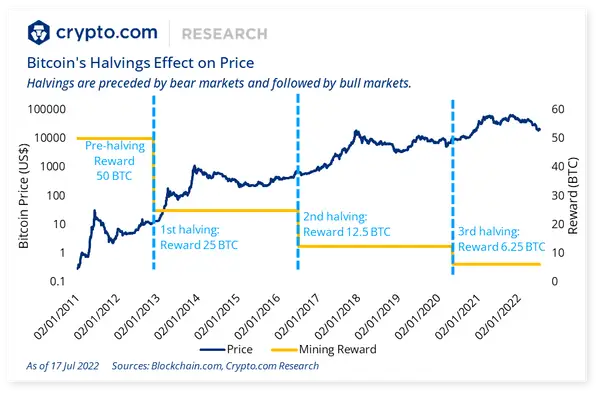
Historically, each halving event has triggered a substantial increase in Bitcoin's price. For example, after the first halving event in 2012, Bitcoin experienced a price surge of over 8,000%. Similarly, the second halving event in 2016 resulted in a more than 2,000% price surge, and the third halving event in 2020 preceded a bullish trend that saw the cryptocurrency's price quadruple within a year.

This predictable scarcity and the periodic halving events act as safeguards against inflation, reassuring Bitcoin's users of its value proposition, and driving up demand, consequently increasing the price.

However, it is worth noting that the significance of halving events as triggers for bull markets is subject to debate. They do not typically generate unusually strong on-chain activity or serve as catalysts for momentum before they occur. Furthermore, as time passes, the mining reward becomes a smaller fraction of the active supply, making it unlikely to cause a supply shock on its own. Nevertheless, these events contribute to the narrative that Bitcoin is a well-designed store of value, supported by the fact that Bitcoin has experienced a bull run after each of the three halvings, thus further strengthening the belief in the value of betting on halving events.
- Mainstream Adoption
The adoption of Bitcoin and cryptocurrencies, in general, has experienced remarkable growth as of 2023. While retail investors were the early adopters of Bitcoin, mainstream adoption has surged in recent years. Recent statistics indicate that approximately 400 million people worldwide now own cryptocurrencies, signifying the increasing acceptance of digital assets in the mainstream. This adoption can be attributed to the growing accessibility of cryptocurrencies, with an increasing number of financial institutions offering services related to digital assets.
- Countries Adoption
The adoption of Bitcoin by countries has been a gradual but steady process. While some countries have approached digital currencies with caution, others have taken bold steps towards integrating them into their economies. El Salvador made history by becoming the first country to adopt Bitcoin as a legal tender in 2021, setting a precedent for other nations to follow suit. Furthermore, as countries traditionally hold significant amounts of gold reserves, they may consider Bitcoin as an attractive digital alternative for diversifying their reserve assets. The 21st century belongs to the internet, and Bitcoin is poised to be a part of that future.

- Regulatory Factors
The regulatory environment plays a critical role in the adoption of Bitcoin and cryptocurrencies and varies significantly across countries. Some jurisdictions, like the UAE, position themselves as crypto free zones to attract investments and foster innovation. Conversely, other governments, such as China, have adopted a harsher stance by outright banning cryptocurrencies and imposing strict penalties for their use. In the United States, speculation persists that the government may launch “Operation Chokepoint 2.0” to curtail the use of cryptocurrencies following recent banking crises. However, it's important to note that Bitcoin's decentralized nature makes it challenging for any single government or institution to control or ban it outright. Regulatory environments that embrace cryptocurrencies and promote adoption are more likely to attract companies and further contribute to Bitcoin's growth and acceptance.
What about other cryptocurrencies?
Altcoins and Altcoin Season
While Bitcoin remains the primary driver of the cryptocurrency industry, it's worth noting that other cryptocurrencies, commonly referred to as altcoins, can offer significantly higher returns during altcoin seasons. These periods are characterized by altcoins outperforming Bitcoin by a wide margin.
To date, there has been only one remarkable altcoin season, which occurred around 2021 when the markets and altcoins experienced explosive growth. An infamous example is Vitalik, who made nearly $4.3 million from his $25,000 investment in Dogecoin.
However, it's important to acknowledge that altcoins are often viewed as speculative investments, with expectations that the majority (90-95%) of them will ultimately fail, as observed in the industry's early days.
“Some people say you don't need many altcoins, and only a handful of ‘good' altcoins will suffice. I disagree. During altcoin season, the number of altcoins in your portfolio is less relevant. Regardless of whether you hold 5 or 50 altcoins, your portfolio is likely to experience substantial growth. At that point, you can sell underperforming altcoins or projects that did not meet expectations while still holding onto the ones you believe in until their value reaches either zero or infinity.”
Although we are currently far from an altcoin season, this might be an opportune moment to consider finding some oscillator altcoins and open positions in certain coins. Perhaps you also just want to gamble a small part of your portfolio to randomly buy a 100x coin.

Ethereum's Role and Transformation
Ethereum, as the second-largest cryptocurrency by market capitalization, plays a significant role in the crypto economy. While Bitcoin often serves as the reserve asset that holds universal value, Ethereum acts as the financial layer on top, enabling diverse applications for financial platforms, NFT platforms, and more.
An intriguing aspect of Ethereum is its transition from a proof-of-work to a proof-of-stake consensus mechanism, making it a disinflationary asset. In fact, it could be argued that Ethereum is one of the few assets of such scale with a disinflationary nature.
Furthermore, this shift has resulted in a staggering 99.9% reduction in Ethereum's energy consumption, now consuming only 0.001% of the energy used by platforms like YouTube. This transition positions Ethereum as a potentially attractive environmental play as well.
From a trading perspective, it's worth noting that Ethereum and Bitcoin share a strong correlation of around 90%, implying that their price movements are closely aligned.
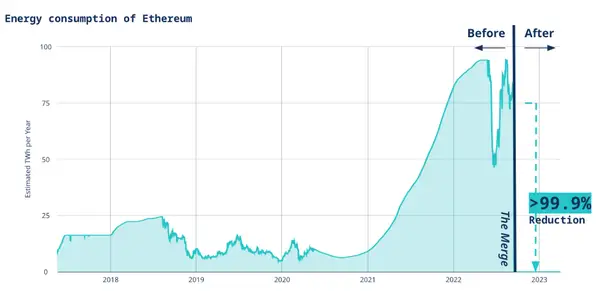
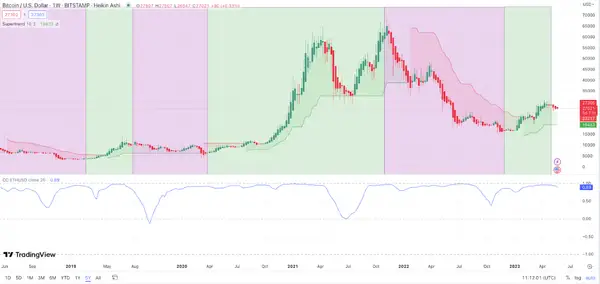
Current State of the Cryptocurrency Market
The cryptocurrency market is currently characterized by notable progress and setbacks. On one hand, new builders are joining the web3 space rapidly, academic research is advancing, and crucial infrastructure is improving. Ethereum's successful transition to energy-saving proof-of-stake is a significant milestone. On the other hand, negative events have garnered attention, leading to project failures, investor losses, and a decline in DeFi and NFT activity. Market cycles in the crypto space follow a logic where rising prices drive innovation. Regulation is evolving, with proposed bills, court deliberations, and enforcement actions shaping the landscape. Despite setbacks, there is an opportunity to champion decentralized systems as a resilient alternative to centralized models. The future of web3 technologies is crucial for the evolution of the internet.
Overall State of the Cryptoeconomy
Despite the current downturn in prices, the cryptocurrency industry is undeniably experiencing substantial growth. To grasp the bigger picture, all you have to do is to look at developer activity and product launches, highlight the industry's upward trajectory.
Various metrics demonstrate this upward trend, including active addresses, academic publications, and developer activity. These metrics can be viewed in our presentation or a comprehensive state of crypto index, providing a comprehensive view of the industry's progress.
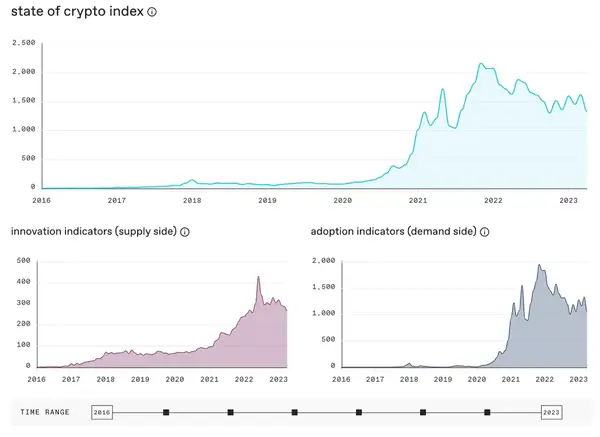
Taking a step back and considering the broader adoption since 2016 can help put things into perspective. It's crucial to look beyond price fluctuations and focus on other indicators that reflect the industry as a whole.
Moreover, when comparing the crypto industry to the adoption curves of other innovative technologies, it's worth noting that major transformations often take time. Just like how Google emerged as a dominant force within a decade, it may take approximately 20 years for cryptocurrency to establish itself fully. We are now entering the second stage of a 20-year mass adoption cycle. Therefore, it's important to recognize that we are still in the early days, with immense potential and uncharted frontiers ahead of us.
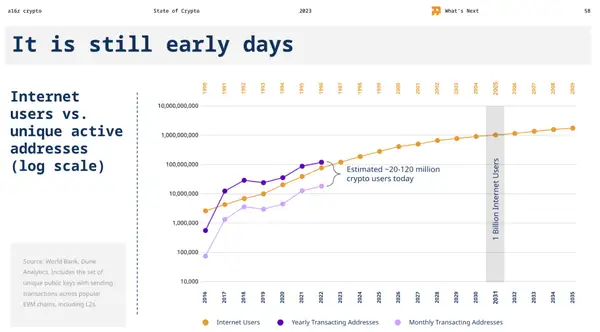
Narrative & Macro Play
US Default
Let's delve into the narrative and macro play surrounding the cryptocurrency market, particularly in the context of potential financial crises.
US Default: To fully grasp the significance, we need to reflect on the origins of Bitcoin. It emerged as a response to the 2008 financial crisis, during which governments and banks betrayed public trust. Today, we find ourselves at another critical juncture, with multiple banks facing defaults and the looming possibility of the US defaulting on its debt obligations. Such an event would entail halting interest payments on Treasury bonds.
In such a scenario, people are likely to seek refuge in hard assets like gold or digital alternatives such as cryptocurrencies. This shift toward safe-haven assets could potentially fuel the growth of the cryptoeconomy.
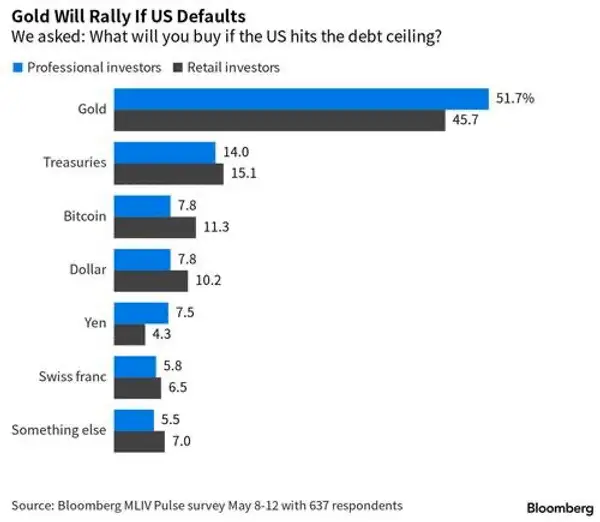
Conversely, if the US decides to raise the debt ceiling and increase money supply, it could trigger inflationary pressures. In response, individuals may seek to preserve their wealth by investing in assets like cryptocurrencies, leading to further growth in the cryptoeconomy.
Regardless of the outcome, whether a default or increased money printing, the long-term prospects for the cryptoeconomy appear bullish. It serves as a lifeboat amidst the chaos of financial collapses, providing individuals with an avenue to safeguard their assets and participate in a decentralized financial system.
Multipolar world
We are witnessing the dawn of a multipolar world, where traditional global power dynamics are shifting, and the influence of the United States and the G7 nations is waning. This transition is accompanied by a potential decline in the dominance of the US dollar as the world's leading reserve currency. In fact, BRICS countries have already begun exploring alternatives by settling transactions in different currencies or commodities.
In this evolving landscape, smaller nations seeking an uncensored and non-dependent alternative may turn to Bitcoin as a viable option. Bitcoin, being the native currency of the internet, holds unique appeal as the internet itself has become the largest economy in the world.
As the world becomes increasingly interconnected, there is a growing need for a neutral layer of conducting cross-border trade that transcends the limitations of traditional banking systems. Cryptocurrencies, with their decentralized nature and borderless characteristics, offer a promising solution. They provide a means for individuals and businesses to engage in global trade without relying on centralized financial intermediaries.
As this trend towards a more connected world continues, the demand for cryptocurrencies as a medium of exchange and store of value is expected to rise. The cryptocurrency economy stands to benefit from this global shift, serving as an alternative financial ecosystem that enables frictionless and censorship-resistant international transactions.
Technical Indicators
Fear and Greed Index
The Fear and Greed Index, currently around 50, provides insights into market sentiment. It measures the collective fear or greed of investors. A value of 50 indicates a neutral sentiment, balancing caution and optimism. By considering market volatility, trading volumes, surveys, and social media sentiment, the index offers a snapshot of investor sentiment. Remember, market sentiment can change rapidly, so it's important to combine the index with other analysis tools.
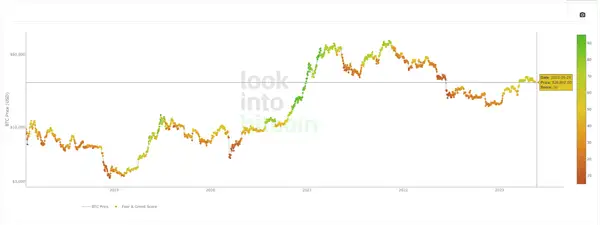
MVRV Z-Score
The MVRV Z-Score is a powerful tool for identifying market cycles in the cryptocurrency space. It has a strong track record of signaling when market value deviates significantly from realized value. When the z-score enters the pink box, indicating that market value is unusually high above realized value, it often marks the top of market cycles. In fact, historical analysis has shown that the MVRV Z-Score accurately predicted the market highs of each cycle within a two-week timeframe.
Conversely, when the z-score enters the green box, signaling that market value is far below realized value, it presents an opportune time to consider buying Bitcoin. Historical data has demonstrated that purchasing Bitcoin during these periods of undervaluation has historically resulted in substantial returns.
The MVRV Z-Score, at the time of this writing is at approximately 0.43, it suggests that the current market value is moderately higher than the historical average. Only recently the MVRV Z-Score has dropped below 0, which has only happened a couple of times before major bull markets.

Realized Price
At present, the realized price of Bitcoin stands at 20K, while the market price is 26K. This discrepancy indicates a period of market distress, as the market price exceeds the realized price. Only recently we moved above the realized price, which has only happened a few times before major bull markets in history.
Such instances have historically occurred during major cycle lows, as depicted on the Bitcoin live chart. The disparity arises because many participants are reluctant to hold onto losing positions, particularly in bear markets with negative news coverage. Consequently, they sell to value investors at cycle lows, before the market price eventually rises above the realized price during the subsequent bull market phase.
This relationship between market price and realized price offers valuable insights into market sentiment and behavior, enabling investors to identify periods of distress and potential cycle lows. It presents opportunities for value investors seeking to capitalize on market dynamics.

Non-Quantifiable Checklist of Bull Market Beginnings
Here is a checklist that provides indications of the start of a bull market, even though these points may not be quantifiable:
- Multi-month accumulation bottom: Look for a period of sideways price action following a significant decline, indicating a solid base has been established.
- Undervalued metrics: Key indicators, such as Bitcoin's price being below its Energy Value or a Hash Ribbon Buy signal, suggest potential upside in the market.
- Sentiment change: Positive price movements on negative news, Bitcoin outperforming altcoins, or price reclaiming major levels after negative events indicate a shift in sentiment.
- Flushed out long leverage: Reduction in various forms of leverage, such as funding rates and open interest, signals a reduction in excessive speculation.
- Major short squeeze: Following an accumulation phase, an excessively bearish market can trigger a short squeeze, resulting in a rapid upward movement.
- Smart money accumulation: Silent accumulation of Bitcoin by institutional investors demonstrates confidence in the market's future prospects.
- New money influx: Increasing participation of new users and traders, leading to a growing overall market capitalization, supports sustainable growth and reflects a bullish market sentiment.
Monitoring these factors can provide a qualitative assessment of market conditions and help identify the early stages of a bull market.
What Could Drive The Next Crypto Bull Run
In order to understand the potential catalysts behind the next crypto bull run, it is essential to examine various factors that can significantly influence the market. From technological advancements and regulatory dynamics to market sentiment and scarcity, these elements play a pivotal role in shaping the trajectory of cryptocurrencies.

Let's explore these factors in detail:
- Adoption of Unicorn Crypto Apps: The adoption of blockchain technology hinges on the emergence of groundbreaking applications that attract millions of new users. These “unicorn” applications can drive widespread adoption of cryptocurrencies. Play to Earn Applications have already provided people with better jobs in certain low-income countries. Additionally, the rise of censorship-resistant social media platforms and fairer profit share models contributes to people switching form big tech to the better models of of blockchain technology.
- Crypto as an Alternative to Government Regulation: Cryptocurrencies serve as viable alternatives to traditional government regulations, especially in cases involving rights infringement or the pursuit of monetary independence. Countries like El Salvador, which have adopted Bitcoin as legal tender, showcase the potential for cryptocurrencies to provide a more stable economic environment with competitive currencies. Furthermore, events such as bank failures or a potential default on national debt can spur interest in alternative hard assets, including cryptocurrencies. Inflationary pressures in high-inflation economies also drive adoption, as seen in countries experiencing economic turmoil or conflict.
- Conviction and Institutional Investment: The increasing conviction surrounding cryptocurrencies plays a crucial role in their growth. If more major companies, such as those in the S&P 500, or prominent funds choose to invest in cryptocurrencies like Bitcoin, it can significantly impact their valuation and attract greater attention. Moreover, as billionaires allocate larger portions of their assets to cryptocurrencies, it further strengthens market sentiment and can drive sustained growth. This can also be driven by loss of confidence in the FED and by trying to escape into assets that could be more inflation proof.
- Halving Events and Black Swan Events: The occurrence of the fourth halving event, which reduces the rate at which new supply enters the market, can drive scarcity and potentially impact crypto prices. This scarcity factor, combined with unexpected events like the possibility of gold production becoming cheaper through space mining, can further enhance the appeal of Bitcoin as a unique and scarce investment.
Key Indicators and Signals to Look For
When it comes to predicting market movements and identifying precise indicators, achieving consistent success remains an elusive goal even for seasoned experts. The complexity and volatility of cryptocurrency markets make accurate timing a challenging endeavor. As renowned investor Peter Lynch aptly put it, “Thousands of experts study overbought indicators, head-and-shoulder patterns, put-call ratios, the Fed's policy on money supply… and they can't predict markets with any useful consistency, any more than the gizzard squeezers could tell the Roman emperors when the Huns would attack.”
In light of this reality, we propose a different approach to cryptocurrency investing—one that embraces a value investing mindset and emphasizes accumulating positions during favorable market conditions. If we assume that the overall direction of the drivers for the next crypto bull market is correct, but do not know the exact moment when all these events might start, we suggest accumulating your positions when indicators show favorable conditions. This approach is akin to value investing, where the focus is on identifying opportunities when market indicators align with favorable buying conditions.
Aside from the indicators discussed earlier, there are other factors worth considering to gain an overall idea of the market's direction. By adopting this approach and considering a range of indicators, we can navigate the cryptocurrency market with a more informed perspective, positioning ourselves to take advantage of favorable market opportunities.
Funding Rates
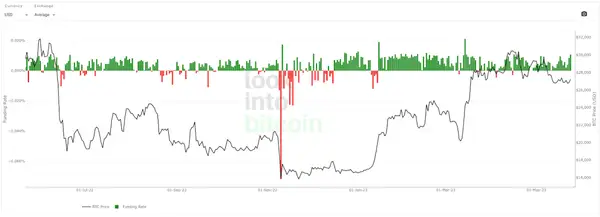
Monitoring funding rates provides insights into the market sentiment and traders' positioning. Extreme positive or negative funding rates can suggest potential reversals in Bitcoin price. At the time of writing, the funding rates for Bitcoin are positive, indicating a higher interest in long positions among traders.
Puell Multiple
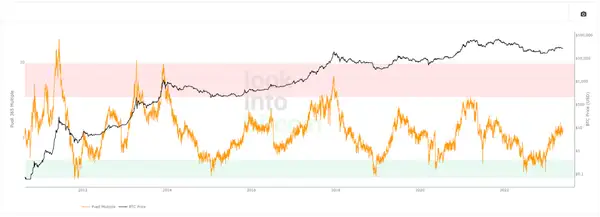
The Puell Multiple helps identify periods when the daily issuance of Bitcoin is significantly deviating from historical norms. Recognizing these periods can be advantageous for strategic Bitcoin investors. Historically, low Puell Multiple values (green box) have led to significant returns for those who bought Bitcoin, while high values (red box) have presented opportunities for profitable selling. The Puell Multiple, currently around 1, indicates that the daily issuance of Bitcoin is within the range of historical norms. This suggests a relatively balanced supply of newly mined coins entering the market, perhaps indicating to wait.
Advanced NVT Signal
The Advanced NVT Signal leverages investor activity on the Bitcoin blockchain to predict price movements. When the indicator reaches extremes within the upper red and lower green boundaries, it can provide insights into potential price increases or decreases on medium time frames. It serves as a tool to forecast Bitcoin price movement based on investor behavior. The NVT Signal, currently around 150, falls within the rather high range, possibly indicating that the price might fall further.
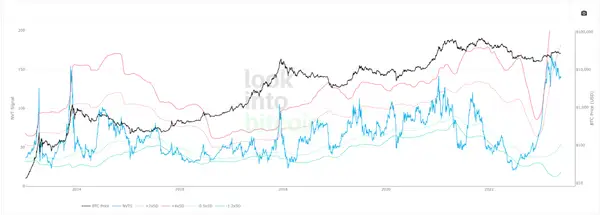
Google Trends
In addition to the indicators mentioned earlier, it can be insightful to consider Google Trends data to gauge the momentum building for a potential parabolic Bitcoin run. Monitoring the overall interest and engagement of social media searches related to Bitcoin can provide valuable insights into the sentiment and excitement surrounding the cryptocurrency. As hype and interest increase, it could serve as an additional indicator that the bull run is potentially starting or gaining traction once again.

Strategies for Maximizing Opportunities in the Next Bull Run
Preparing and optimizing your opportunities in the cryptocurrency market is akin to honing your skills in a competitive sport. Just as a tennis player wouldn't step onto the court without practice and a game plan, you shouldn't enter the bull market unprepared. It's essential to take proactive steps to maximize your chances of success.
Setting clear investment goals and risk management strategies
Begin by setting clear investment goals and establishing effective risk management strategies. Determine your trading style and whether you prefer to adopt a long-term holding approach or actively navigate the market's ups and downs. This will help you stay focused and make informed decisions aligned with your objectives.
Diversifying cryptocurrency portfolio based on research and analysis
Diversification is another key aspect of optimizing your cryptocurrency portfolio. While some may swear by the merits of Bitcoin alone, exploring promising altcoins can provide opportunities for higher returns. However, exercise caution and conduct thorough research. Be wary of projects endorsed solely by influencers or celebrities, as their involvement doesn't guarantee long-term viability. Look for projects with solid fundamentals, technological advancements, and a supportive community.
During the bull run, it's easy to get caught up in the excitement and overlook the importance of portfolio allocation. Don't be swayed by the temptation to invest heavily in any trending asset. Instead, take a step back and consider your overall allocation strategy. It's also wise to have an exit strategy in place or set targets for profit-taking. This will help you secure gains and mitigate potential losses.
Utilizing dollar-cost averaging and timing market entry and exit points
To further enhance your approach, consider implementing dollar-cost averaging. This strategy involves investing a fixed amount at regular intervals, regardless of the asset's price. It helps smooth out volatility and reduces the risk of making emotional, impulsive decisions based on short-term market fluctuations.
Lastly, continually improve your trading and investing skills. Just as experienced athletes refine their techniques, experienced traders can identify optimal entry and exit points. By staying informed, studying market trends, and learning from past experiences, you'll be better equipped to seize opportunities and navigate the ever-changing cryptocurrency landscape.
Conclusion
In conclusion, armed with a comprehensive understanding of historical bull runs, the current state of the market, and key indicators to watch for, you now possess the knowledge needed to navigate the upcoming crypto bull run. By reviewing the patterns and lessons learned from previous cycles, you are well-prepared to anticipate market shifts and capitalize on the opportunities that lie ahead.
Throughout this article, we have explored various indicators that can serve as valuable tools for assessing market conditions. From analyzing on-chain metrics such as MVRV Z-Score and NVT Signal to considering factors like funding rates and Google Trends, these indicators provide valuable insights into market sentiment, momentum, and potential turning points.
Moreover, we have highlighted the significance of major events and trends that could significantly impact the cryptocurrency landscape. Whether it's technological advancements, regulatory changes, institutional adoption, or shifts in public sentiment, being aware of these factors allows you to fine-tune your strategies and adapt to the evolving market dynamics.
Remember, a key aspect of optimizing your opportunities in the next bull run is careful portfolio allocation and risk management. Setting clear investment goals, diversifying your holdings based on thorough research, and employing strategies like dollar-cost averaging are essential steps in maximizing your potential returns while minimizing risks.
Embrace the lessons learned, seize the moment, and capitalize on the next crypto bull run.

Disclaimer: All investments involve risk, and the past performance of a security, industry, sector, market, financial product, trading strategy, or individual’s trading does not guarantee future results or returns. Investors are fully responsible for any investment decisions they make. Such decisions should be based solely on an evaluation of their financial circumstances, investment objectives, risk tolerance, and liquidity needs. This post does not constitute investment advice.

Painless trading for everyone
Hundreds of markets all in one place - Apple, Bitcoin, Gold, Watches, NFTs, Sneakers and so much more.

Painless trading for everyone
Hundreds of markets all in one place - Apple, Bitcoin, Gold, Watches, NFTs, Sneakers and so much more.









